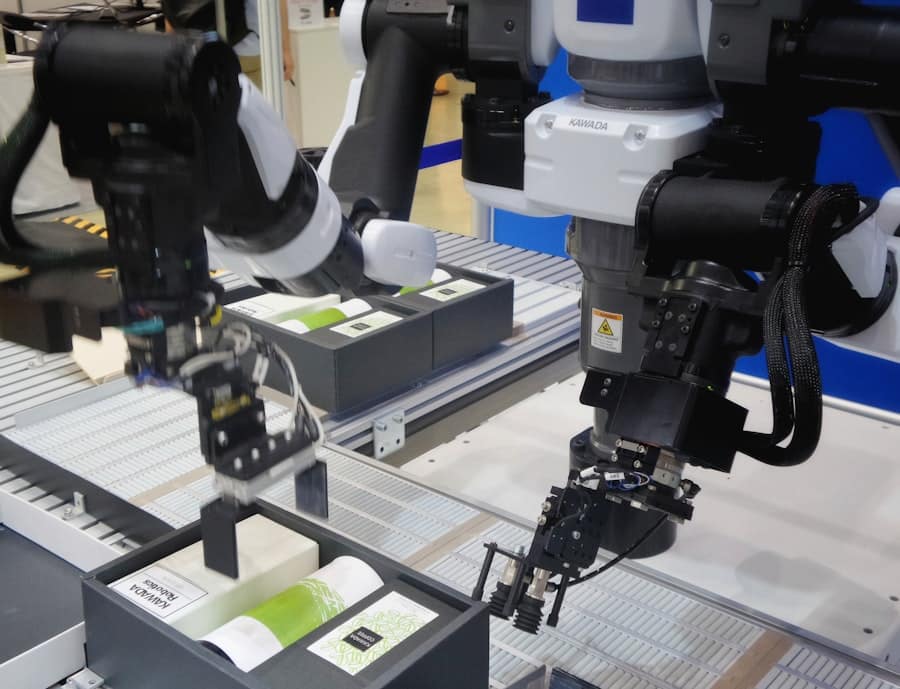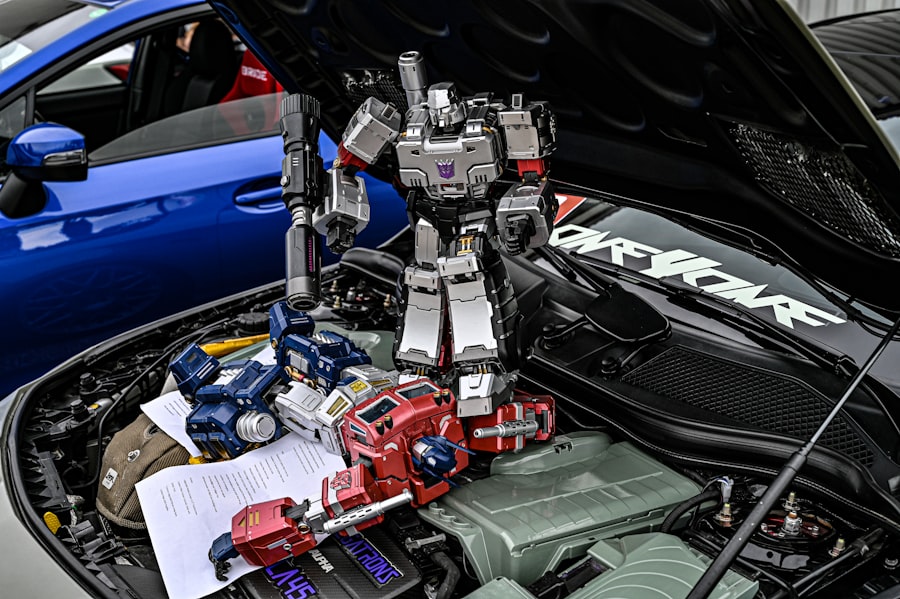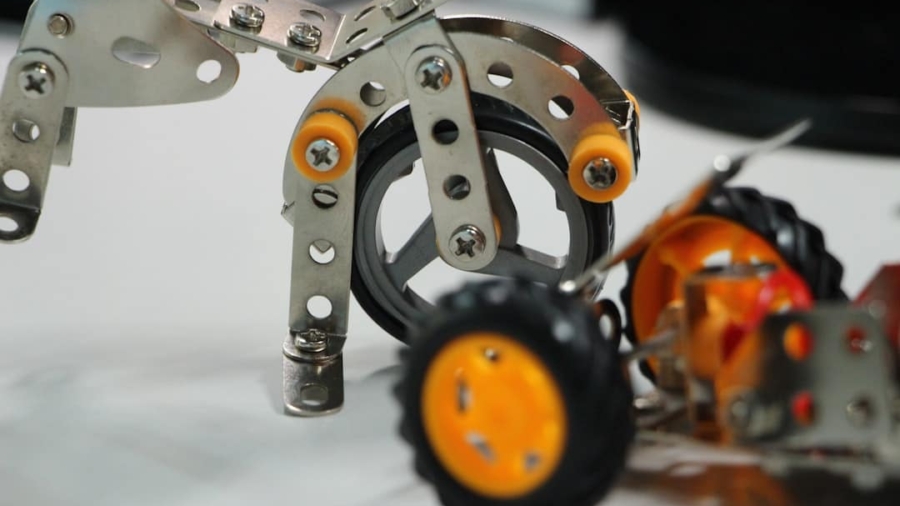The automotive industry has undergone a significant transformation over the past few decades, with robots playing a pivotal role in reshaping assembly lines. The integration of robotic technology into automotive manufacturing processes has revolutionized how vehicles are produced, enhancing efficiency, precision, and safety. From welding and painting to assembly and quality control, robots have become indispensable tools that streamline operations and reduce human error.
The evolution of robotics in this sector can be traced back to the introduction of the first industrial robots in the 1960s, which laid the groundwork for the sophisticated automation systems we see today. As the demand for vehicles continues to rise globally, manufacturers are increasingly turning to robotics to meet production targets while maintaining high standards of quality. The automotive assembly line is a complex environment where various components must be assembled with precision and speed.
Robots are designed to handle repetitive tasks that require consistent performance, allowing human workers to focus on more complex and creative aspects of production. This shift not only enhances productivity but also contributes to a safer working environment by reducing the risk of workplace injuries associated with manual labor.
Key Takeaways
- Robots have revolutionized the automotive industry by automating various tasks in assembly lines, leading to increased efficiency and productivity.
- Implementing robots in automotive assembly lines can lead to benefits such as improved quality, reduced labor costs, and increased safety for workers.
- Challenges of implementing robots in automotive assembly lines include high initial investment, the need for skilled technicians to operate and maintain the robots, and potential job displacement.
- A successful case study of implementing robots in automotive assembly lines is the use of collaborative robots (cobots) at BMW’s Spartanburg plant, which led to increased production and reduced ergonomic issues for workers.
- A failed case study of implementing robots in automotive assembly lines is the example of Tesla’s Model 3 production, where the overreliance on automation led to production delays and quality issues.
- Future trends in robots for automotive assembly lines include the use of advanced technologies such as artificial intelligence, machine learning, and autonomous mobile robots to further improve efficiency and flexibility.
- Ethical and social implications of robots in automotive assembly lines include concerns about job displacement, the need for retraining workers, and the impact on the overall work environment.
- In conclusion, the impact of robots on automotive assembly lines is undeniable, with the potential for significant improvements in efficiency and productivity, but also the need to carefully consider the ethical and social implications of widespread automation.
Benefits of Implementing Robots in Automotive Assembly Lines
The advantages of incorporating robots into automotive assembly lines are manifold. One of the most significant benefits is the increase in production efficiency. Robots can operate continuously without fatigue, working around the clock to meet production demands.
This capability allows manufacturers to significantly boost output while minimizing downtime. For instance, a robotic arm can perform tasks such as welding or painting at a speed and accuracy that far surpasses human capabilities, leading to shorter cycle times and higher throughput. Moreover, robots contribute to improved quality control in automotive manufacturing.
With advanced sensors and machine learning algorithms, robotic systems can detect defects and inconsistencies in real-time, ensuring that only vehicles meeting stringent quality standards proceed down the assembly line.
For example, companies like Toyota have implemented robotic systems that utilize vision technology to inspect components for defects before they are assembled, significantly reducing the likelihood of quality issues in the final product.
Challenges of Implementing Robots in Automotive Assembly Lines

Despite the numerous benefits, the implementation of robots in automotive assembly lines is not without its challenges. One of the primary concerns is the high initial investment required for robotic systems. The cost of purchasing, installing, and maintaining advanced robotic technology can be substantial, particularly for smaller manufacturers with limited budgets.
Additionally, integrating robots into existing production lines often necessitates significant modifications to infrastructure and workflows, which can lead to temporary disruptions in operations. Another challenge lies in the need for skilled personnel to operate and maintain robotic systems. While robots can handle repetitive tasks efficiently, they require human oversight for programming, troubleshooting, and maintenance.
The shortage of skilled workers in robotics and automation can hinder the successful implementation of these technologies. Furthermore, as robots take over more tasks traditionally performed by humans, there is a growing concern about job displacement within the industry. This issue raises important questions about workforce retraining and the future role of human workers in an increasingly automated environment.
Case Study: Successful Implementation of Robots in Automotive Assembly Lines
A notable example of successful robot implementation in automotive assembly lines can be seen at Tesla’s Gigafactory in Nevada. Tesla has embraced automation as a core component of its manufacturing strategy, utilizing a wide array of robotic systems throughout its production processes. The Gigafactory employs thousands of robots for tasks ranging from battery cell production to vehicle assembly.
By leveraging advanced robotics, Tesla has been able to scale its production capabilities rapidly while maintaining high levels of quality. One specific instance of success at Tesla involves the use of robotic arms for the assembly of battery packs. These robots are equipped with precision tools that allow them to perform intricate tasks such as inserting cells into modules with remarkable accuracy.
This automation not only speeds up production but also minimizes the risk of human error during assembly. As a result, Tesla has been able to meet increasing demand for its electric vehicles while maintaining a competitive edge in the market.
Case Study: Failed Implementation of Robots in Automotive Assembly Lines
In contrast to successful implementations, there are also instances where robotic integration has not gone as planned. A prominent example is General Motors’ experience with its “Factory Zero” initiative aimed at automating vehicle assembly lines for electric vehicles. While GM invested heavily in robotic technology to enhance efficiency and reduce costs, the transition faced significant hurdles that ultimately led to delays and increased expenses.
One major issue was the complexity of integrating new robotic systems into existing production lines that were not originally designed for automation. The company encountered challenges related to programming and calibrating robots to work seamlessly alongside human workers and existing machinery. Additionally, there were unforeseen technical difficulties that arose during the implementation phase, leading to extended downtimes and production slowdowns.
These setbacks highlighted the importance of thorough planning and testing when introducing new technologies into established manufacturing environments.
Future Trends in Robots for Automotive Assembly Lines

Looking ahead, several trends are poised to shape the future of robotics in automotive assembly lines. One significant trend is the increasing adoption of collaborative robots, or cobots, which are designed to work alongside human operators safely. Unlike traditional industrial robots that often operate in isolation due to safety concerns, cobots are equipped with advanced sensors and AI capabilities that allow them to interact with humans in real-time.
This collaboration can enhance productivity by allowing workers to focus on more complex tasks while robots handle repetitive or hazardous activities. Another emerging trend is the integration of artificial intelligence (AI) and machine learning into robotic systems. As these technologies advance, robots will become more adept at learning from their environments and adapting their behaviors accordingly.
For instance, AI-driven robots could analyze data from previous production runs to optimize their performance continuously, leading to improved efficiency and reduced waste. This level of adaptability will be crucial as automotive manufacturers strive to meet evolving consumer demands and navigate supply chain challenges.
Ethical and Social Implications of Robots in Automotive Assembly Lines
The rise of robotics in automotive assembly lines brings forth a range of ethical and social implications that warrant careful consideration. One pressing concern is the potential impact on employment within the industry. As automation becomes more prevalent, there is a legitimate fear that many jobs traditionally held by humans may become obsolete.
This shift raises questions about how companies will address workforce displacement and what measures will be taken to retrain employees for new roles that require different skill sets. Moreover, there are ethical considerations surrounding workplace safety and worker well-being. While robots can enhance safety by taking on dangerous tasks, there is also a risk that reliance on automation may lead to complacency among human workers regarding safety protocols.
Ensuring that employees remain vigilant and engaged in safety practices is essential as automation becomes more integrated into daily operations. Additionally, companies must consider how they communicate changes related to automation to their workforce transparently and ethically.
The Impact of Robots on Automotive Assembly Lines
The impact of robots on automotive assembly lines is profound and multifaceted, influencing everything from production efficiency to workforce dynamics. As manufacturers continue to embrace automation technologies, they must navigate both the opportunities and challenges presented by this evolution. Successful implementations demonstrate the potential for robots to enhance productivity and quality while also highlighting the importance of strategic planning and workforce engagement.
As we look toward the future, it is clear that robotics will play an increasingly central role in shaping the automotive industry. The integration of collaborative robots and AI-driven systems promises to redefine how vehicles are manufactured while addressing ethical considerations related to employment and safety. Ultimately, the journey toward a more automated automotive assembly line will require careful consideration of both technological advancements and their broader implications for society as a whole.
In the realm of technological advancements within the automotive industry, the integration of robots in assembly lines has revolutionized production processes, enhancing efficiency and precision. A related article that delves into the broader implications of technology in various sectors is available on Recode, a technology news website owned by Vox Media. This platform provides insights into how technological innovations are reshaping industries beyond automotive manufacturing. For more information, you can explore the article on Recode by visiting this link.
FAQs
What are robots in automotive assembly lines?
Robots in automotive assembly lines are automated machines that are used to perform various tasks in the manufacturing process of vehicles, such as welding, painting, and assembly.
How are robots used in automotive assembly lines?
Robots are used in automotive assembly lines to increase efficiency, improve precision, and reduce the risk of human error. They can perform repetitive tasks with high accuracy and speed, leading to higher productivity and lower production costs.
What are the benefits of using robots in automotive assembly lines?
The benefits of using robots in automotive assembly lines include improved quality control, increased production output, reduced labor costs, and enhanced worker safety. Robots can also handle tasks that are difficult or dangerous for humans to perform.
What types of robots are used in automotive assembly lines?
Various types of robots are used in automotive assembly lines, including industrial robots, collaborative robots (cobots), and autonomous mobile robots (AMRs). These robots are equipped with different tools and sensors to perform specific tasks in the manufacturing process.
Are robots replacing human workers in automotive assembly lines?
While robots have automated many tasks in automotive assembly lines, they have not completely replaced human workers. Instead, robots have augmented the workforce by handling repetitive and physically demanding tasks, allowing human workers to focus on more complex and skilled tasks.

